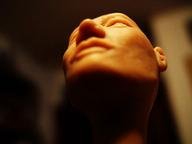Quiz Answer Key and Fun Facts
1. Who of the following was NOT a satirical writer during the Enlightenment?
2. Who of the following was responsible for the 'Dictionary of the English Language'?
3. Which of the following fields was G. L. Buffon largely responsible for the popularization of?
4. Vigee-Lebrun, Fragonard, Greuze, and David were all painters during the time of the Enlightenment. What is the most obvious distinction that separates Vigee-Lebrun from the other three?
5. Which of the following writers first inspired the literary movement known as Sturm und Drang (Storm and Stress)?
6. Whose pre-revolutionary pamphlet famously said that the Third Estate was 'everything'?
7. Which of the following works theorized that society is a 'contract between the dead, the living, and the unborn'?
8. After the execution of Louis XVI, two contentious political parties arose in France: the Mountains (sometimes referred to as the Jacobins) and the Girondins. Who of the following was NOT a member of the Mountains?
9. To whom did the post-revolutionary term 'enrages' refer?
10. At the time of his execution, by what name did the Parisian masses refer to Louis XVI?
Source: Author
rj211
This quiz was reviewed by FunTrivia editor
bloomsby before going online.
Any errors found in FunTrivia content are routinely corrected through our feedback system.
